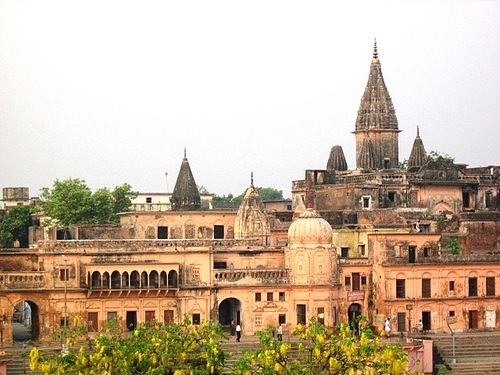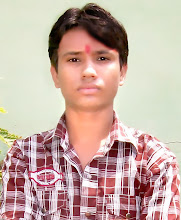Ayodhya
With little over 10 sq Km in area, lying on the banks of the river Ghagra or Saryu, this ancient city is believed to be the birth place of Lord Rama, the seventh incarnation of Lord Vishnu. The holy book of Hindus- the Ramayana- says, the city was founded by Manu. Later, it became the capital of the descendants of the Surya dynasty. Lord Rama was the most celebrated King of this dynasty. Known as ‘Kosaldesa’ in ancient times, the place has been described as “a city built by gods and being as prosperous as paradise itself”, in the Atharvaveda. From the time immemorial, this place has been noted for the performance of various rituals and Yajnas, including ‘Asvamedha Yajna’. From the epic and puranic ages, Ayodhya rose to prominence again in the 6th century B.C,the times of Buddha. Situated just about 10 Km from the district headquarters of Faizabad, Ayodhya is a city of temples of several religions. Various faiths have grown and prospered simultaneously and that also in different periods of time in the history. Jain traditions, for example, consider that five Tirthankaras were born at Ayodhya including Rishabhadeva, the first Tirthankar. Don’t miss the remnants of Buddhism, Hinduism, Islam and Jainism, that can still be found in Ayodhya.
Ayodhya is preeminently a city of temples yet, all places of worship here, are not only of Hindu religion. At Ayodhya several religions have grown and prospered simultaneously and also at different periods of time in the past.
Places to visit
 |
| THE FAMOUS HANUMAN GARHI TEMPLE |
HANUMAN GARHI
This is the most famous Temple of Ayodhya
A massive structure in the shape of a four sided fort with circular bastions at each corner houses a temple of Hanuman and is the most popular shrine in Ayodhya. Kanak Bhawan
Kanak BhawanThis has images of Sri Rama and Sita wearing gold crowns. It is also known as Sone-ke-Ghar.According to mythology in ancient time it a palace of gold. This palace was given to Sita by Kakai.
 The chief place of worship in Ayodhya is the site of the ancient citadel of Ramkot which stands on an elevated ground in the western part of the city. Although visited by pilgrims throughout the year, this sacred place attracts devotees from all over India and abroad, on `Ram Navami’, the day of Lord’s birth, which is celebrated with great pomp and show, in the Hindu month of Chaitra (March-April).
The chief place of worship in Ayodhya is the site of the ancient citadel of Ramkot which stands on an elevated ground in the western part of the city. Although visited by pilgrims throughout the year, this sacred place attracts devotees from all over India and abroad, on `Ram Navami’, the day of Lord’s birth, which is celebrated with great pomp and show, in the Hindu month of Chaitra (March-April). Nageshwarnath Temple
Nageshwarnath TempleThe temple of Nageshwarnath is said to have been established by Kush the son of Rama. Legend has it that Kush lost his armlet, while bathing in the Saryu, which was picked up by a Nag-Kanya, who fell in love with him. As she was a devotee of Shiva, Kush erected this temple for her. It is said that this has been the only temple to have survived till the time of Vikramaditya, the rest of city had fallen into ruins and was covered by dense forests. It was by means of this temple that Vikramaditya was able to locate Ayodhya and the sites of different shrines here. The festival of Shivratri is celebrated here with great pomp and splendor.
 |
| Tulsi Udyan |
 Saryu River
Saryu River Ayodhya Darshan starts only after the Saryu Snan
without saryu snan it is meant uncomplete.
Other places of interest
Rishabhadeo Jain Temple, Brahma Kund, Amawan Temple, Tulsi Chaura, Laxman Quila, Angad Tila, Shri Rama Janaki Birla Temple, Tulsi Smarak Bhawan, Ram ki Paidi, Kaleramji ka Mandir, Datuvan Kund, Janki Mahal, Gurudwara Brahma Kund Ji, Ram Katha Museum, Valmiki Ramayan Bhawan, are among other places of interest in Ayodhya.
Language : Hindi, Avadhi and English
Festivals : Shravan Jhoola Mela (July-August), Parikrama Mela (October-November), Ram Navmi (March-April), Rathyatra (June-July), Saryu Snan (October-November), Ram Vivah (November), Ramayan Mela.
Local Transport : Taxis/Tongas/Tempos/Buses/Cycle-Rikshaws.

